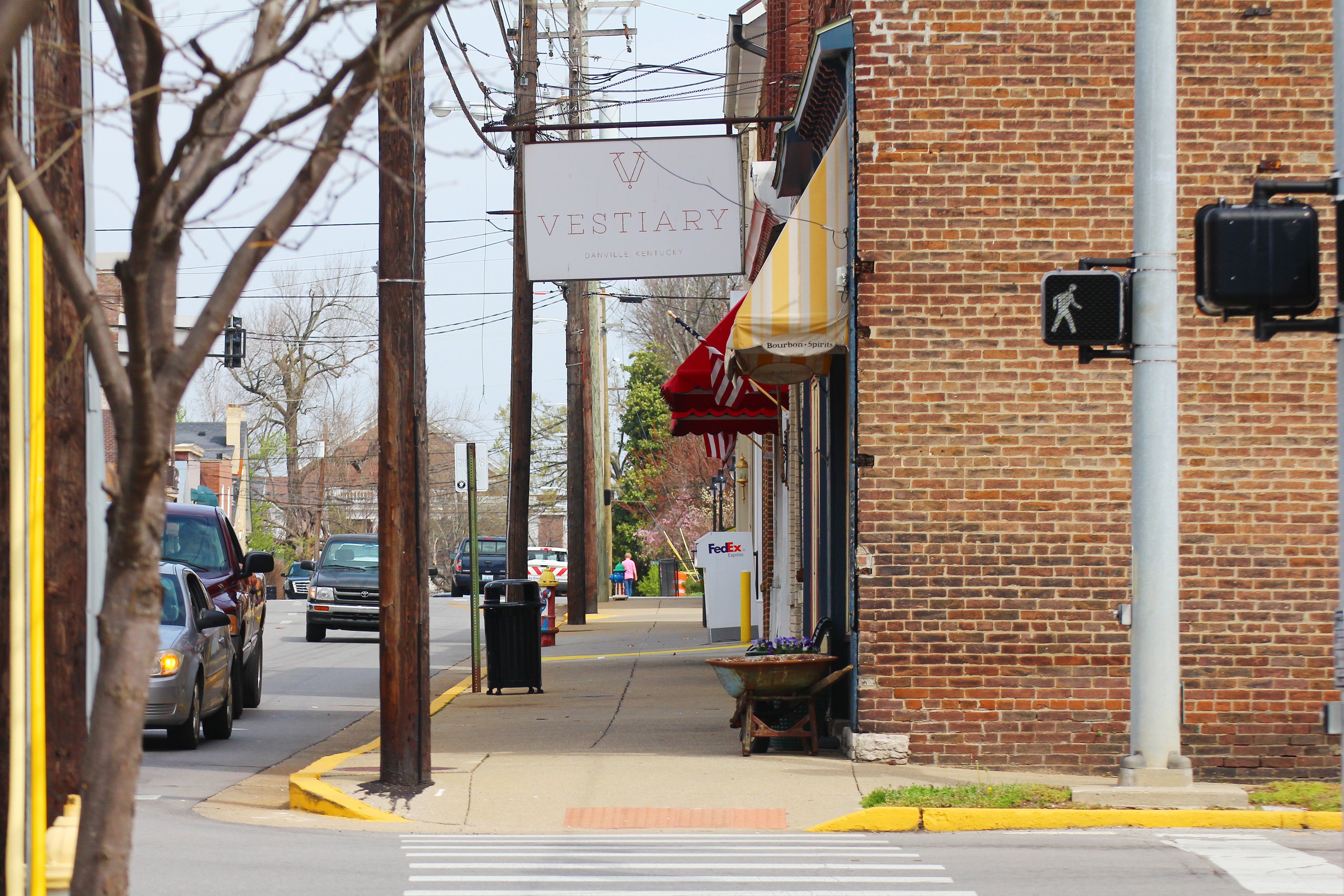Proposed guidelines would relax signage rules in Danville’s historic district
Published 8:19 am Thursday, May 18, 2017

- Ben Kleppinger/ben.kleppinger@amnews.com An overhaul of design guidelines for Danville’s downtown historic districts could provide more freedom for different signs to downtown businesses, like these along South Fourth Street, and allow for public art and murals.
Downtown Danville business owners may be getting what they asked for from an overhaul of the city’s historic district design guidelines: less restrictive rules on signs and public murals.

Ben Kleppinger/ben.kleppinger@amnews.com
Alan Higgins with Cultural Resource Analysts presents a summary of new design guidelines he has drafted for the City of Danville’s historic districts during Wednesday’s Architectural Heritage Board meeting.
The first draft of new combined design guidelines for the city’s residential and commercial historic districts is expected to be released to the public later this week, according to Alan Higgins with Cultural Resource Analysts, the company retained to develop the new guidelines.
Higgins summarized the changes the draft guidelines would create for Architectural Heritage Board members Wednesday morning. Changes include:
• “qualitative” not prescriptive guidelines for murals and public art;
• similarly “qualitative” sign guidelines without specific square footage requirements;
• a “quicker review process for minor projects” that would avoid the requirement of a hearing before the AHB;
• the addition of guidelines allowing for modern energy efficiency and sustainability measures; and
• the addition of “visual guides” to help property owners wanting to build additions or new structures.
“As proposed, the signage language does take out the specific signage dimensions that are in the sign ordinance,” Higgins said.
However, the guidelines are written in such a way that a requirement on dimensions could be added back in easily without requiring rewriting of the entire guidelines document.
“There’s still discussion in there about maintain appropriate scales with buildings, but it does get away from the prescriptive requirements that are part of the sign ordinance,” he said.
Current restrictions on signage downtown generated the most complaints and requests for changes as the process of updating the design guidelines began earlier this year.
“Signage is the issue that really is the lightning rod for this,” said Bernie Hunstad, a former Danville mayor, during a public input session early in the process. “It was when I was mayor and I think that it will be today.”
Complaints about signage rules have focused on limits on the size of signs and the size of lettering, as well as restrictions that prevent large murals or hinder the creation of public art.
Something else suggested during the process has been creating different tiers of guidelines for different buildings, based on each building’s historical value.
Higgins said while the first draft doesn’t create any tiers, it does try to “strike a balance” between different types of property.
“It lays it out in a more articulated way about how you can balance the status of an individual property, whether it may be contributing to the district or whether it may not be contributing to the district, and what that may mean for allowable or compatible alterations, and then how you balance that with the local context,” he said. “… The end goal of this is … getting away from some of those inflexible or rigid guidelines, while still protecting the character of the district.”
Something else added in the draft guidelines is the ability to handle “unknowns,” Higgins said.
“Design guidelines naturally cannot address every issue … every project is unique; every property is unique,” he said. “In the past, there was no mechanism for addressing projects that weren’t addressed in the guidelines. So what I’ve done with the guidelines in the update process is to provide that mechanism.”
Higgins said in the “guiding principles” listed in the first chapters of the draft guidelines, he lays out how the AHB can still evaluate a project “in the absence of a very specific guideline dealing with a very specific issue.”
“The goal of this is to get away from fundamentally denying a property simply because it’s not covered in the design guidelines,” he said.
The draft guidelines are a single, seven-chapter document with seven appendices. Higgins said he combined the city’s current residential and commercial historic district guidelines, which are separate documents, in order to avoid redundancy on requirements that apply to both areas the same way.
Chapters one through three “provide a framework for preservation in Danville and the importance of balancing preservation goals with broader community goals of smart growth and development,” according to a “cheat sheet” provided by Higgins.
Chapter four contains “universal principles and guidelines” that would apply to all historic districts, while chapters five and six would address residential and commercial properties, respectively, according to the sheet.
Chapter seven “provides guidance on demolition and relocation within the historic overlay district,” according to the sheet.
The sheet also notes one other change: “Provide recommendations to be considered for public streetscapes [these are not regulated by the Architectural Heritage Board but basic recommendations regarding how to retain the integrity of distinct areas can help influence decision-making by public works and other entities].”
Higgins said hard copies of the draft guidelines would be distributed to AHB board members before the end of the week, and a digital version would also be posted as a Google Doc online. Danville Code Enforcement Director Bridgette Lester said a link to the publicly viewable Google Doc would be made available on the Facebook group created for the design guidelines update process, “Danville Design Guidelines Update.”
The next step in the process will be a 30-day review period, during which members of the public can critique the draft guidelines and suggest revisions.
The final product from Cultural Resource Analysts must be delivered to Danville by the end of June in order to meet a deadline for grant funding that’s helping cover the cost of the project.
However, Higgins and Lester noted, the final proposed guidelines from CRA would not take effect until the Danville-Boyle County Planning and Zoning Commission and the Danville City Commission passed them into law; and further changes could be made to the guidelines after CRA’s work is done.
MORE ONLINE
The Facebook group created to host discussion of the design guidelines update can be found by searching Facebook for “Danville Design Guidelines Update” or by visiting bit.ly/DDGU2017. A link to the draft guidelines is expected to be posted later this week.






